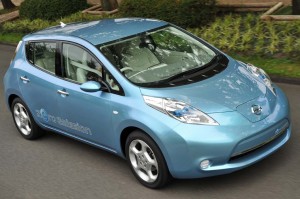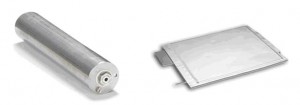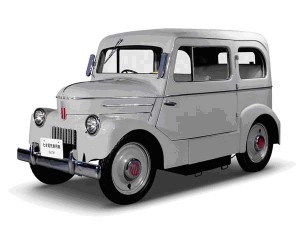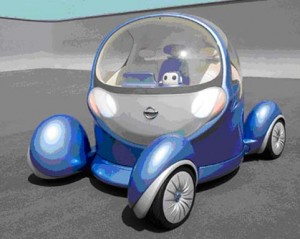
Nissan plans to put the Leaf battery car into limited production in a year, and begin retail sales in 2012.
Nissan is hoping to turn a new Leaf. The automaker this weekend pulled the wraps off its long-promised battery vehicle, a product the Japanese manufacturer hopes will put it in the forefront of the industry’s push for cleaner, more fuel-efficient automobiles.
While Nissan is by no means the only automaker pushing for “electrification” of the car, the maker has been racing to form an array of government and private partnerships that it believes will help it turn battery power into a commercially viable concept faster than competitors like Toyota, General Motors or Honda.
Dubbed Leaf, Nissan’s 5-door hatchback is roughly the same size as the gasoline-powered Tiida – which it markets in the U.S. as the Versa. In current configuration, the battery-electric vehicle, or BEV, is expected to deliver about 100 miles per charge, though company insiders tell TheDetroitBureau.com that their mid to long-term goal is to bring range up to 200, and perhaps even 250 miles as lithium-ion battery technology continues to improve.

Most battery vehicles, hybrids or pure electrics, use cylindrical, laptop-style batteries. Nissan has turned to a flat, laminate battery that makes it easier to pack more power into a smaller space.
“This car represents a real breakthrough,” said Carlos Ghosn, the Brazilian-born executive who serves as CEO of both Nissan Motor Co. and its French alliance partner, Renault. The executive drove out in a prototype of the Leaf during a ceremony marking the automaker’s move from Tokyo to all-new headquarters in nearby Yokohama. “We have been working tirelessly to make this day a reality – the unveiling of a real-world car that has zero – not simply reduced – emissions.”
The first Leaf will reach market in roughly a year, though initially, sales will be limited to fleet markets. That will make it easier to control driving conditions and ensure there are readily available charging stations. But in 2012, Nissan hopes to begin marketing Leaf to retail customers, as well.

Prince, one of the companies that eventually became a part of Nissan, produced this early electric vehicle in 1947.
To achieve that goal will ultimately require new batteries that are both cheaper, smaller, lighter and more powerful than today’s LIon technology. But there are more immediate needs. Among other things, motorists will require a network of charging stations.
Other manufacturers are also racing to produce battery cars. In June, Mitsubishi launched production of its new i-MiEV, though the smaller maker warned that the cost of the technology will likely put it out of the reach of the typical consumer. A number of new entrants to the auto industry are also pushing battery power, including Silicon Valley-based Tesla Motors. The start-ups first vehicle, the Roadster, costs more than $100,000, but Tesla hopes it can cut that by a third or more when it debuts a sedan model, several years from now.
To gain a lead in the emerging field, Nissan is not only pushing to develop better batteries, but also alternative business models. It is considering the idea of selling the Leaf but leasing buyers the battery, probably for a figure roughly equal to what they might expect to spent on gasoline each month.

Using battery power eliminates the need for putting an engine in front of the driver and conceivably permits some unusual design changes, as shown with the prototype Nissan Pivo2, which debuted at the 2007 Tokyo Motor Show.
Nissan representatives have been busy, over the last several years, fanning out across the globe forming alliances with utility companies, state and national governments and private businesses. In Israel, for example, one such alliance will result in both a network of charging posts, but also quick-change facilities where motorists will be able to swap drained batteries for freshly charged one. The carmaker has also received a $1.6 billion loan from the U.S. Department of Energy to modify its assembly plant, in Smyrna, Tennessee, for the production of battery vehicles.
Leaf will be equipped with a special in-car communications system that will continually display the vehicle’s “reachable area,” the destinations it can make without running out of energy. The system also will connect to a global data center that will advise a driver of the nearest charging stations.
Meanwhile, an owner will be able to set charging functions – or turn on the vehicle’s climate control system – remotely.
“The IT system is a critical advantage,” says Tooru Abe, Chief Product Specialist. “We wanted this vehicle to be a partner for the driver and an enhancement for the passengers. We also wanted this vehicle to help create a zero-emission community, and these IT features will help make that possible.”
Ghosn has been the singular driving force for Nissan’s battery program, according to those company sources. He is betting much of the company’s future success on battery power. But where many of its rivals are focused more on battery-electric combinations, such as the hybrid Toyota Prius and Honda Insight models, Ghosn believes there will be significant demand for vehicles running on battery power alone.
While Nissan has shown several prototype electric vehicles, it had kept a tight lid on the specific details of Lead, leading to quite a bit of speculation about what the BEV would look like. Toyota has consciously given its flagship Prius an unusual shape that is easy to recognize, even from a distance. With Leaf, however, Nissan chose to go with a relatively conventional hatchback body.
“We didn’t make it unusual looking. It had to be a real car,” explained the automaker’s design director, Shiro Nakamura, adding that, “This is not a niche car.”
Exactly how big a market there’ll be for battery vehicles remains uncertain. Ghosn has suggested it could be anywhere from 5% to 10% of the global auto market by 2020, but he also cautioned that this will depend on breakthroughs in battery technology.
